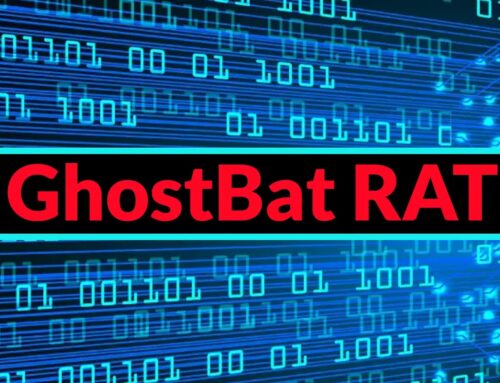
CISA Adds 3 D-Link Router Flaws to KEV Catalog After Active Exploitation Reports
The cybersecurity landscape demands constant vigilance, especially when critical infrastructure components like network routers become targets of active exploitation. The U.S. Cybersecurity and Infrastructure Security Agency (CISA) recently issued a significant warning, adding three previously identified D-Link router vulnerabilities to its Known Exploited Vulnerabilities (KEV) catalog. This action, driven by confirmed evidence of active exploitation in the wild, underscores the urgent need for network administrators and home users alike to address these high-severity flaws. Failure to do so leaves networks exposed to potential compromise, data breaches, and service disruption.
CISA’s KEV Catalog: A Critical Indicator of Exploitation
CISA’s KEV catalog serves as a vital resource for organizations and individuals, highlighting vulnerabilities that are known to be actively exploited by threat actors. Inclusion in this catalog is not merely a theoretical concern; it signifies that these flaws are being leveraged in real-world attacks. For federal agencies, CISA mandates remediation of KEV-listed vulnerabilities within specific timeframes. For the broader internet community, it acts as a strong alert, urging immediate action to mitigate risks. The addition of these three D-Link vulnerabilities signals a documented threat that requires immediate attention.
The Exploited D-Link Vulnerabilities
The three high-severity D-Link router vulnerabilities, dating back to 2020 and 2022, have now been confirmed as actively exploited. These flaws, if left unpatched, can grant unauthorized access, leading to various malicious activities on affected networks. Understanding the nature of each vulnerability is crucial for effective remediation:
- CVE-2020-25078 (CVSS score: 7.5) – This vulnerability points to an unspecified flaw in D-Link routers. While the exact details of its mechanism are not publicly elaborated, its high CVSS score and presence in the KEV catalog indicate its potential for significant impact, likely leading to remote code execution or unauthorized access.
- CVE-2022-29497 (CVSS score: 7.2) – Similar to CVE-2020-25078, this is an unspecified vulnerability, albeit from a more recent discovery date. The active exploitation confirms that threat actors have found a reliable method to capitalize on this flaw, potentially compromising the integrity and confidentiality of network traffic or allowing full device control.
- CVE-2022-29498 (CVSS score: 7.2) – Also an unspecified vulnerability, CVE-2022-29498 represents another remote access vector for attackers. The commonality among these three vulnerabilities is their D-Link router target and their critical status in the KEV catalog, demanding immediate mitigation efforts.
The Risks of Unpatched Routers
Routers are the gateway to your network, making them prime targets for malicious actors. An exploited router can serve as a beachhead for a variety of attacks:
- Unauthorized Network Access: Attackers can gain control of your router, allowing them to access other devices on your network.
- Data Interception: Sensitive data, including login credentials, financial information, and private communications, can be intercepted.
- Malware Distribution: Compromised routers can be used to distribute malware to connected devices.
- Botnet Membership: Your router could be conscripted into a botnet, participating in DDoS attacks or other illicit activities without your knowledge.
- Firmware Tampering: Attackers might install malicious firmware, leading to persistent access and potentially rendering the device unrecoverable.
Remediation Actions and Best Practices
Addressing these vulnerabilities is paramount for anyone using D-Link routers, particularly older models. The following actions are critical for mitigating risk:
- Identify Affected Devices: Determine if your D-Link router model is among those impacted by these specific CVEs. Consult D-Link’s official support channels or vulnerability advisories.
- Update Router Firmware Immediately: The most crucial step is to update your router’s firmware to the latest available version. Manufacturers often release patches for known vulnerabilities. Access your router’s administration interface (typically via a web browser using its IP address) and check for firmware updates. If updates are available, apply them.
- Replace End-of-Life (EOL) Devices: For routers that have reached their End-of-Life (EOL) status, manufacturers no longer provide security updates. If your D-Link router is EOL, the most secure course of action is to replace it with a newer, supported model.
- Strong, Unique Passwords: Ensure your router’s administrative password is strong, unique, and not the default. Change it if you haven’t already.
- Disable Remote Management: Unless absolutely necessary, disable remote management features on your router. This reduces the attack surface from the internet.
- Segment Networks (for Businesses): For organizations, consider network segmentation to isolate critical systems from less secure segments, limiting potential lateral movement for attackers.
- Regularly Monitor Network Traffic: Implement network monitoring tools to detect unusual or suspicious activity originating from or targeting your router.
Tools for Network Security and Monitoring
Leveraging appropriate tools can aid in detecting vulnerabilities and monitoring network health.
| Tool Name | Purpose | Link |
|---|---|---|
| Nessus | Vulnerability scanning and assessment | https://www.tenable.com/products/nessus |
| OpenVAS | Open-source vulnerability scanner | https://www.greenbone.net/en/community-edition/ |
| Wireshark | Network protocol analyzer for traffic inspection | https://www.wireshark.org/ |
| Splunk | SIEM for log aggregation and anomaly detection | https://www.splunk.com/ |
| Shodan | Search engine for internet-connected devices; can identify exposed routers | https://www.shodan.io/ |
Conclusion: The Imperative of Proactive Security
CISA’s inclusion of these D-Link router flaws in its KEV catalog is a stark reminder that legacy vulnerabilities, even those years old, can become high-priority threats when actively exploited. This situation underscores the critical importance of maintaining a proactive security posture. Regularly updating firmware, replacing unsupported hardware, and implementing robust security practices are not merely suggestions; they are essential defenses in safeguarding our digital lives and organizational assets from persistent and evolving cyber threats. Act now to secure your network and prevent potential compromise.





